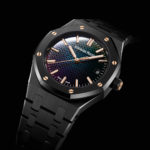Audemars Piguet Unveils the Royal Oak 34 mm in Black Ceramic
Late better than never.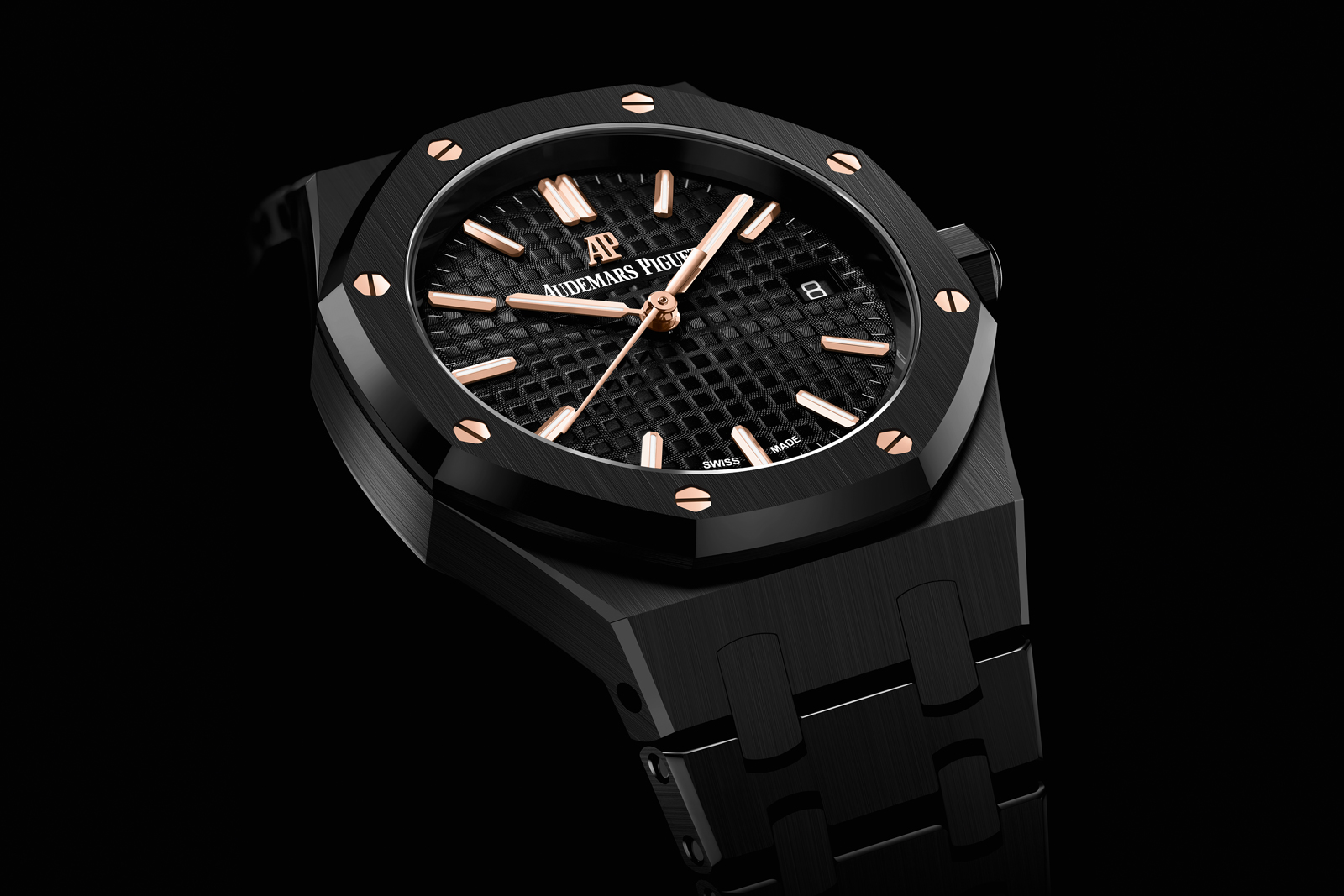
For its second round of new launches for 2021 – after the headline-grabbing Black Panther watch – Audemars Piguet (AP) unveiled Royal Oak models in a range of sizes and complications. The novelties are, in short, gorgeous variations of the brand’s octagonal watch.
One of the most notable is the smallest amongst the new models. For the first time, AP is applying the full-ceramic treatment to a smaller Royal Oak. The Royal Oak Selfwinding 34 mm Black Ceramic is no doubt good news for enthusiasts who want a more compact but unusual version of the simple Royal Oak (availability notwithstanding).
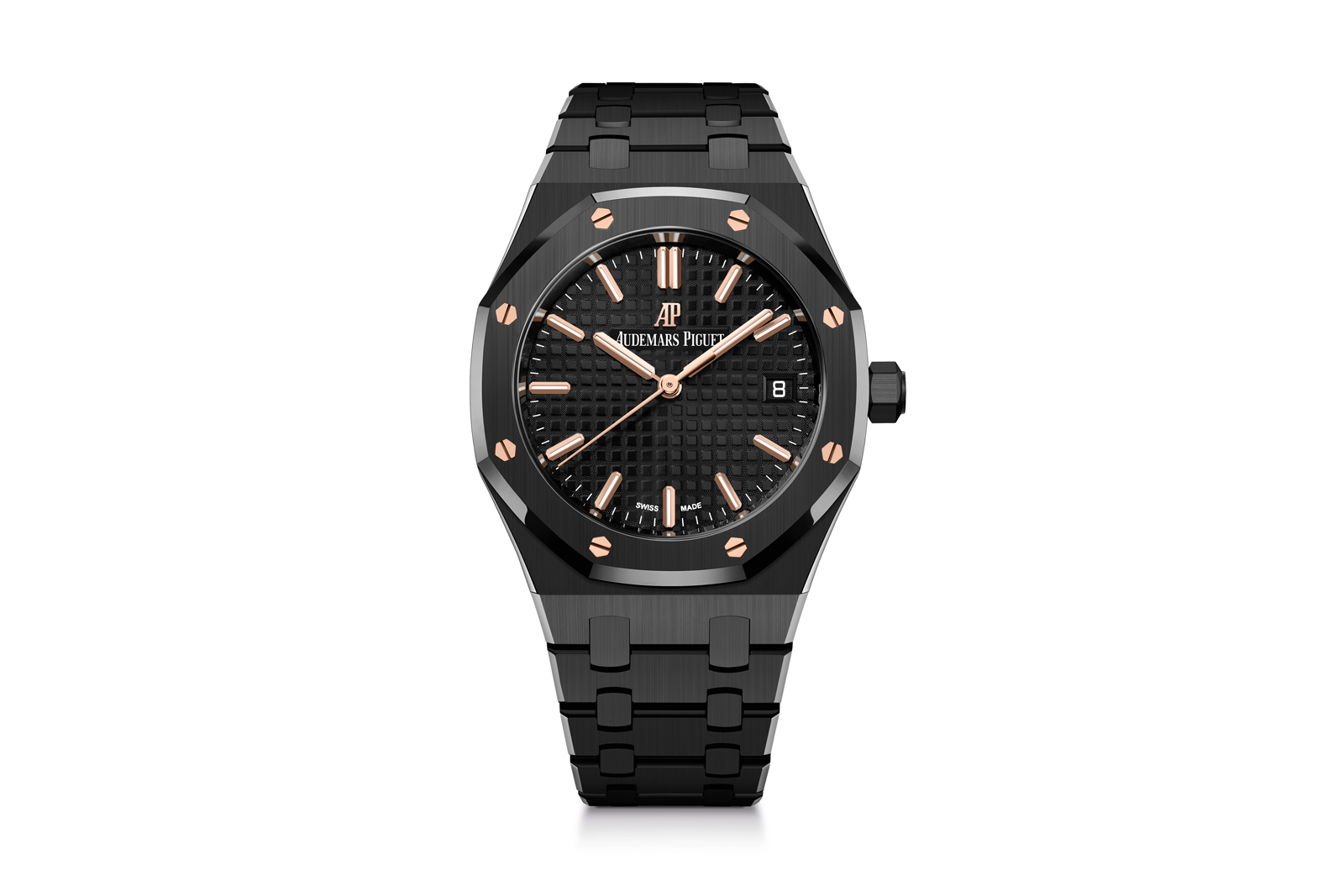
Polished and brushed ceramic
Initial thoughts
While ceramic has long been synonymous with makers of high-end sports watches like AP, it was used sparingly for the Royal Oak, until four years ago when the Royal Oak Perpetual Calendar Black Ceramic made its debut. But the all-ceramic Royal Oak models since then have been complicated, including a white-ceramic perpetual calendar or the skeletonised double balance.
That makes the 34 mm model in black ceramic a pretty big deal – it’s the first base-model Royal Oak in ceramic. But being a Royal Oak, it still feels familiar, which is a good thing if you like the Royal Oak as I do.
Despite being amongst the simplest of Royal Oaks, the new 34 mm model is striking. The pink gold accents on the bezel and dial create the right amount of contrast to break up the monochromatic ceramic, giving the black ceramic a touch of luxe. Consequently, it looks quite different from other all-black sports watches on the market.
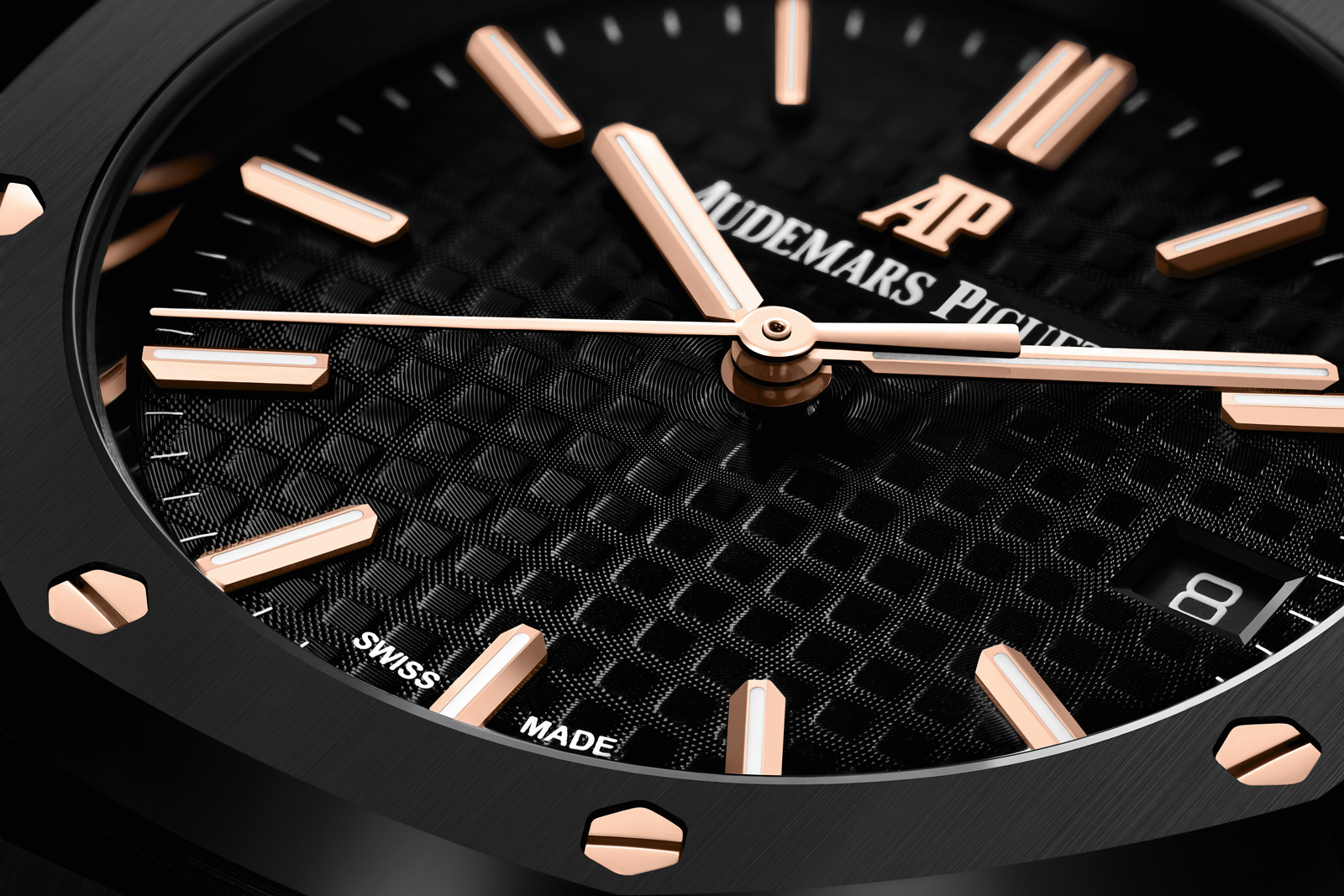
Priced at around US$45,000, the new Royal Oak Selfwinding is expensive for a time-only watch. In fact, it’s only a bit less than the same model in “Frosted” white gold. Though ceramic itself is inexpensive, it also costs significantly more to finish as compared to steel or gold (more on that below).
But it’s arguably worth it, just because it looks good. For a modern material to work well with a classic design is rare. And the new model is arguably even more striking than its peers in gold or steel. Still, as is typical of modern-day Royal Oaks, access matters more than price, because there are far more people who are able and willing to pay than there are watches.
As an aside, AP doesn’t label this a ladies’ watch, though it clearly is in today’s context. That said, its size will work well for men who prefer smaller watches. It is almost the same size as the men’s Royal Oak models of the 1990s, which were 36 mm in the largest size, and also 33 mm in a mid size largely sold in Asia.
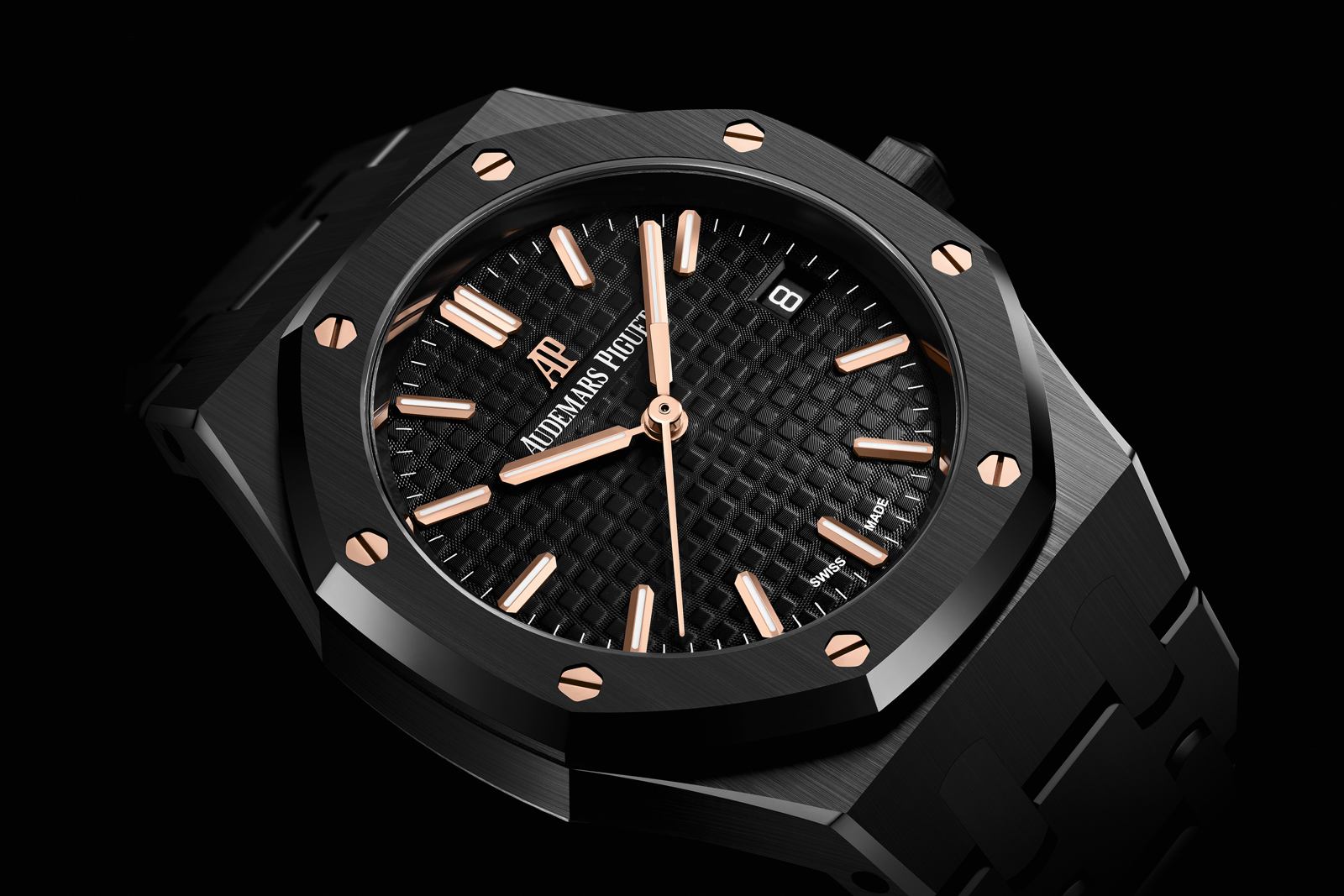
Time-only and ceramic
Ceramic is increasingly common in watches, even affordable brands like Tudor and Bell & Ross offer ceramic cases, but the material remains difficult to process, particularly due to the quality of finishing that defines the Royal Oak. An all-ceramic watch is therefore an illustration of AP’s know-how in making and finishing cases and bracelets to the highest level.
Unsurprisingly, producing a ceramic case and bracelet requires more time than doing the same in steel. According to AP, it takes around 30 hours to put together a ceramic Royal Oak, including machining and finishing of the case and bracelet – as compared to about seven hours for a equivalent Royal Oak in steel or gold.
One reason for that is the ceramic Royal Oak is finished exactly like its metal counterparts, with the case and bracelet boasting the sharply-defined facets along with contrasting surfaces alternately brushed and polished.
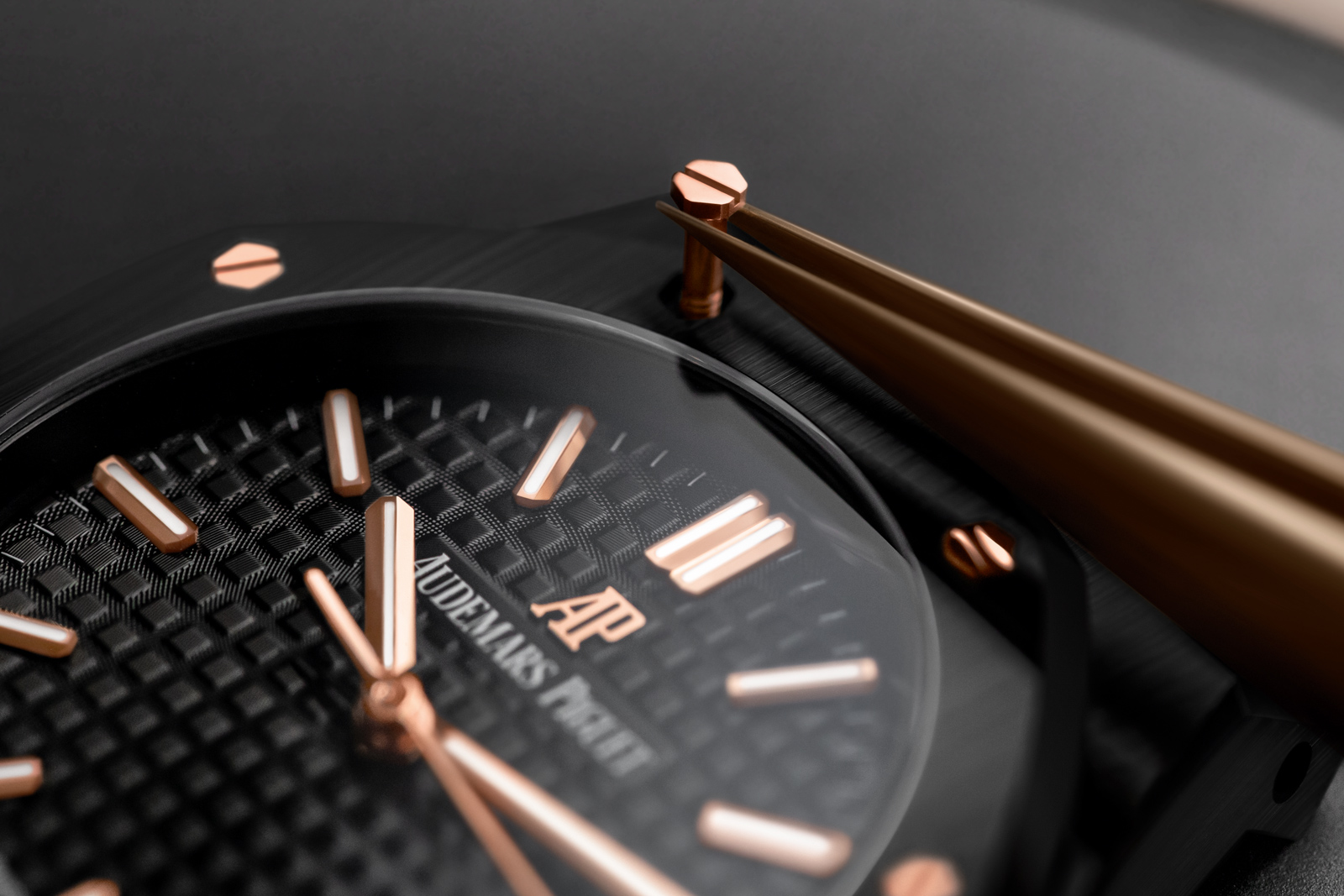
The bezel holds the hexagonal nuts that are secured by screws in the titanium back
All that takes more time largely because of the extreme hardness of ceramic, making the material practically scratch resistant but also causing it to wear out tools more quickly. At the same time, ceramic requires higher strength tooling, such drillbits coated in diamond.
That said, the hardness of ceramic is why the case back is titanium. The material’s hardness means it doesn’t withstand torsional force well, which means excess tightening of screw into a ceramic back could crack it. Most ceramic watches, in fact, have metal-alloy case backs.
Through the titanium back, the cal. 5800 is visible. It’s produced by Vaucher, the movement maker that’s a sister company to Parmigiani. While not in house, the cal. 5800 is a thin, sophisticated calibre that is as good as AP’s own movements.
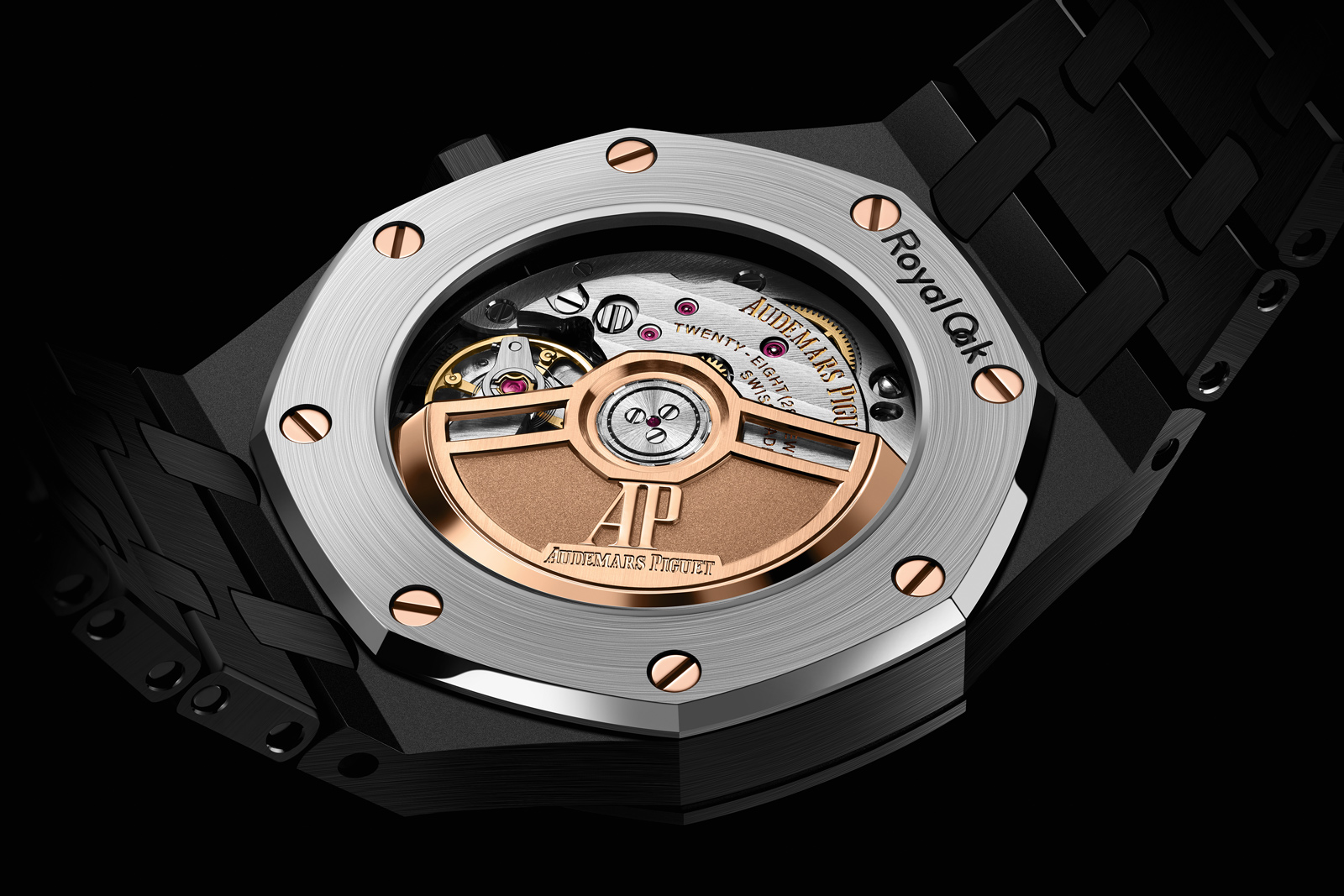
Key facts and price
Audemars Piguet Royal Oak Self-winding 34 mm
Ref. 77350CE.OO.1266CE.01
Diameter: 34 mm
Height: 8.8 mm
Material: Black ceramic with 18k pink gold screws and titanium caseback
Crystal: Sapphire
Water-resistance: 50 m
Movement: Cal. 5800
Functions: Hours, minutes, seconds, and date
Winding: Automatic
Frequency: 28,800 beats per hour (4 Hz)
Power reserve: 50 hours
Strap: Black ceramic bracelet
Availability: Starting October 2021 at boutiques only
Price: US$45,200; or 62,900 Singapore dollars
For more, visit audemarspiguet.com.
Back to top.

